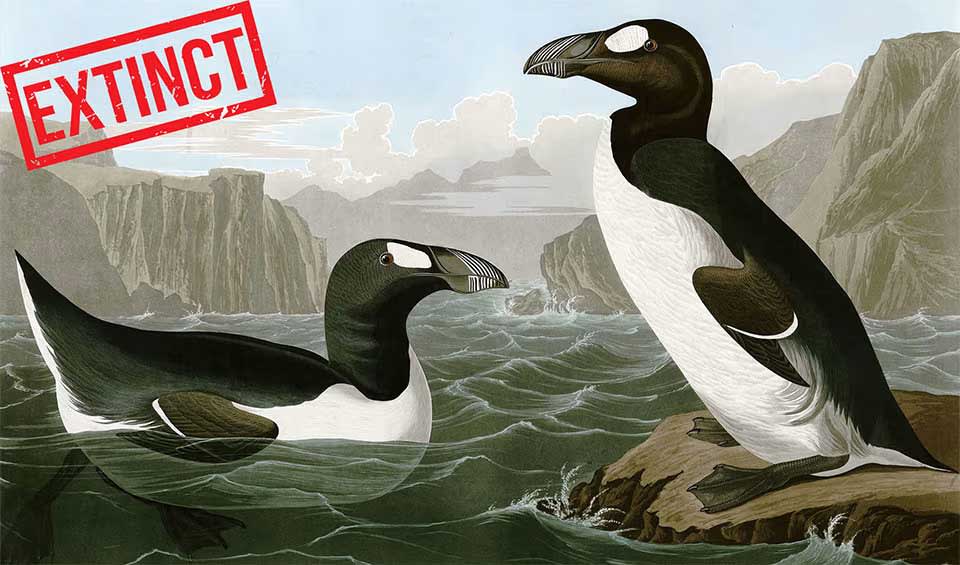Alcidae – Auks, murres & puffins
This colorful family lost a member for a good mid-19th century – the great auk
These seabirds are highly adapted to marine life. They can only be found in the Northern Hemisphere, where they inhabit the cooler waters of the Arctic, North Atlantic, and North Pacific Oceans. Alcids are known for their proficiency in swimming and diving, using their wings to ‘fly’ underwater while pursuing prey.
Alcids come in a range of sizes, with the smallest species measuring around 6 inches (15 cm) in length and the largest reaching up to 18 inches (45 cm). Their weight can vary from a mere 0.17 pounds (77 grams) to a substantial 2.4 pounds (1.1 kg), which is a testament to the diversity within this family. Regardless of size, all alcids have compact bodies with short, narrow wings and small tails, adaptations that make them agile swimmers but often less efficient fliers over long distances.
The webbing on their feet is another adaptation to their aquatic lifestyle, providing propulsion in the water. Alcids typically do not have a rear toe, which reduces drag while swimming. Their legs are set back on their bodies, which aids in diving but makes their movement on land more awkward.
Alcids are predominantly coastal breeders, nesting on cliffs, rocky shorelines, and islands. A few species, such as the Marbled Murrelet, nest in coastal forests. Their nesting sites are chosen for their inaccessibility to predators, and many species form large, dense breeding colonies.
The diet of alcids consists mainly of fish and invertebrates, which they catch by diving. Some species, like the puffins, have specialized bills that allow them to catch and hold multiple fish at once.
Conservation concerns for the Alcidae family include oil spills, overfishing, and climate change, which can all affect the availability of their food sources. In addition, as they require specific coastal habitats for breeding, the protection of these areas is crucial for their continued survival.
Genera in this family
Auklets are among some of the most abundantly observed black and white sea birds
Expert divers—capable of plunging deep into the ocean to hunt for fish, squid, and other marine invertebrates
Puffins have a close resemblance with penguins, but the colorful beak and ability to fly help in their differentiation
The robust and hardy birds are efficient swimmers and divers, spending most of their lives in the water
Capable of diving deeper than most puffins or murres
One of the most instantly recognizable and charismatic seabirds of the North Pacific
The last of these beautifully glossy, black and white birds were hunted in 1844 off the coast of Iceland








